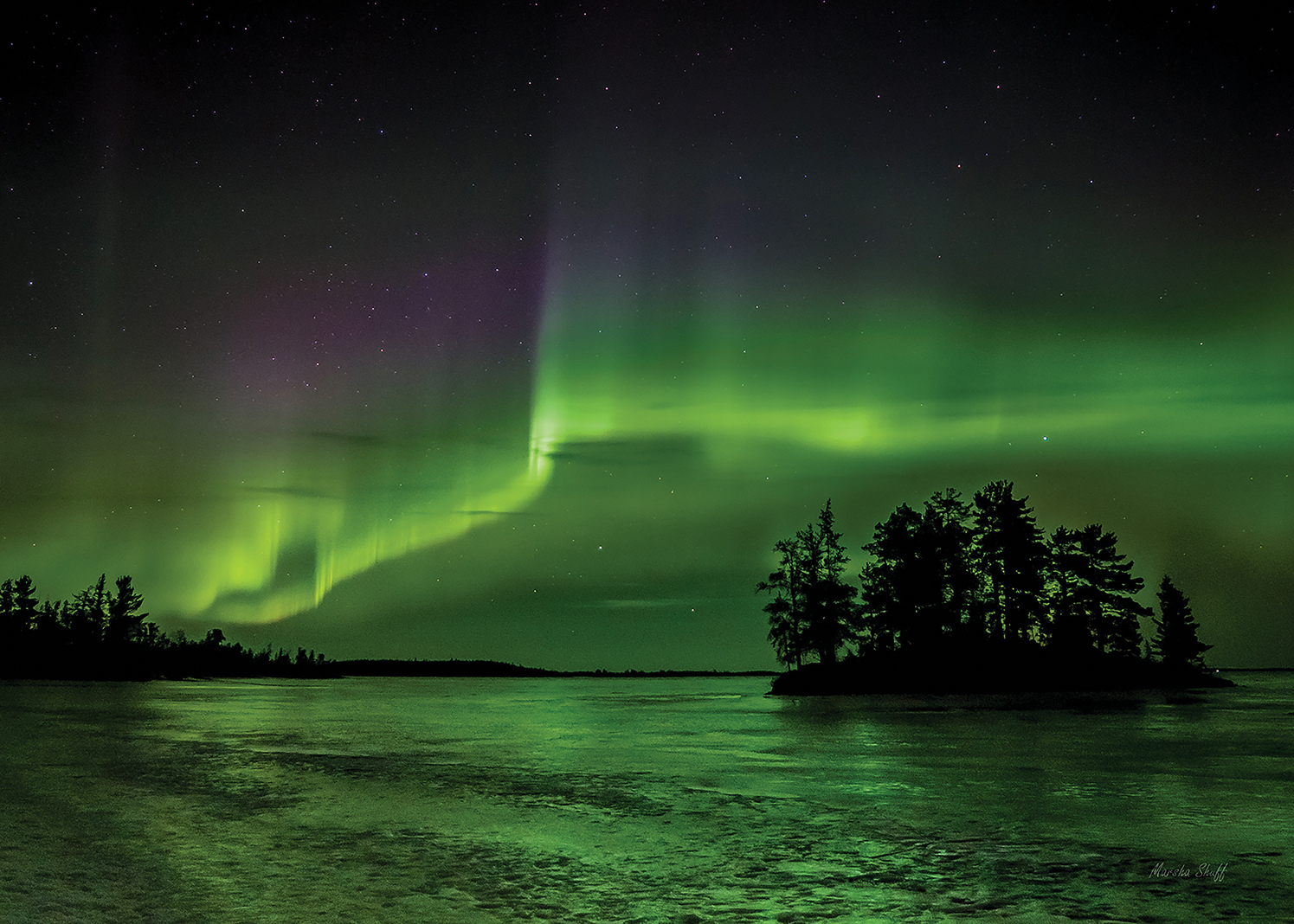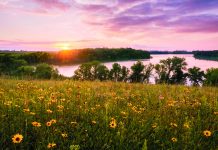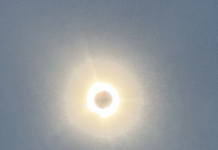
Photo by Marsha Shuff
While more known for canoes than constellations, Minnesota’s lone national park is working to preserve some of the darkest skies in all of North America—and the bounty of cosmic beauty that they contain.
“I think that preserving darkness is a story that a lot of people don’t quite understand,” says Christina Hausman Rhode, Voyageurs Conservancy executive director. “We think about protecting water, we think about protecting wildlife and trees, but darkness isn’t always on our radar. It tends to be a natural resource that we let slip away.”
Voyageurs National Park’s recent certification as an official Dark Sky Park by the International Dark-Sky Association involved a park-wide overhaul of lighting fixtures and a commitment to practices that reduce light pollution. To educate visitors about the wonders of a truly dark sky, Voyageurs works with “Astro” Bob King, a retired photojournalist who moonlights as an amateur astronomer, writer, and educator at Duluth’s Marshall W. Alworth Planetarium.
“When you’re in or near a large city, you’re going to see the moon, the bright planets, and the very brightest stars,” King explains. “But when you go to a dark sky like Voyageurs, portions have the darkest possible skies on earth.”
True, unpolluted darkness—found in Voyageurs’ Crane Lake area—offers a glorious view of the heavens, with thousands upon thousands of stars visible to the naked eye, in addition to deep-sky phenomena like the Seven Sisters star cluster.
“You will not only see the Milky Way; you will see it rippled with bright and dark clouds,” King continues. “Under the darkest skies, you will see your shadow cast by our galaxy, literally.”
Plus, Voyageurs offers plentiful opportunities to witness a mesmerizingly colorful night sky haze known as airglow, and the majestic glory of the northern lights.
“A big thing, especially for our state, is that you can see the aurora,” King explains. “In the Twin Cities area you can see the northern lights only when we have a big display, and those are relatively rare. But if you’re in Voyageurs, even a minor display will show up low in the northern sky as a greenish arc on many nights during the year.”
Hausman Rhode says that Voyageurs has plans to offer both virtual and in-person night sky programming this summer if COVID allows, highlighting the potential for boat-based expeditions to take advantage of Voyageurs’ myriad of twisting waterways. The park’s ample camping opportunities have a distinctly remote feel, enhancing their stargazing potential, and travelers looking for a real treat can spend a weekend stargazing from the deck of one of the many houseboats available for rent within Voyageurs.
“Just looking up and seeing that sky really stirs your sense of wonder, and it can be very calming; it can be a really spiritual experience,” says King. “To experience that beauty and appreciate it is one of the best things in life.”







